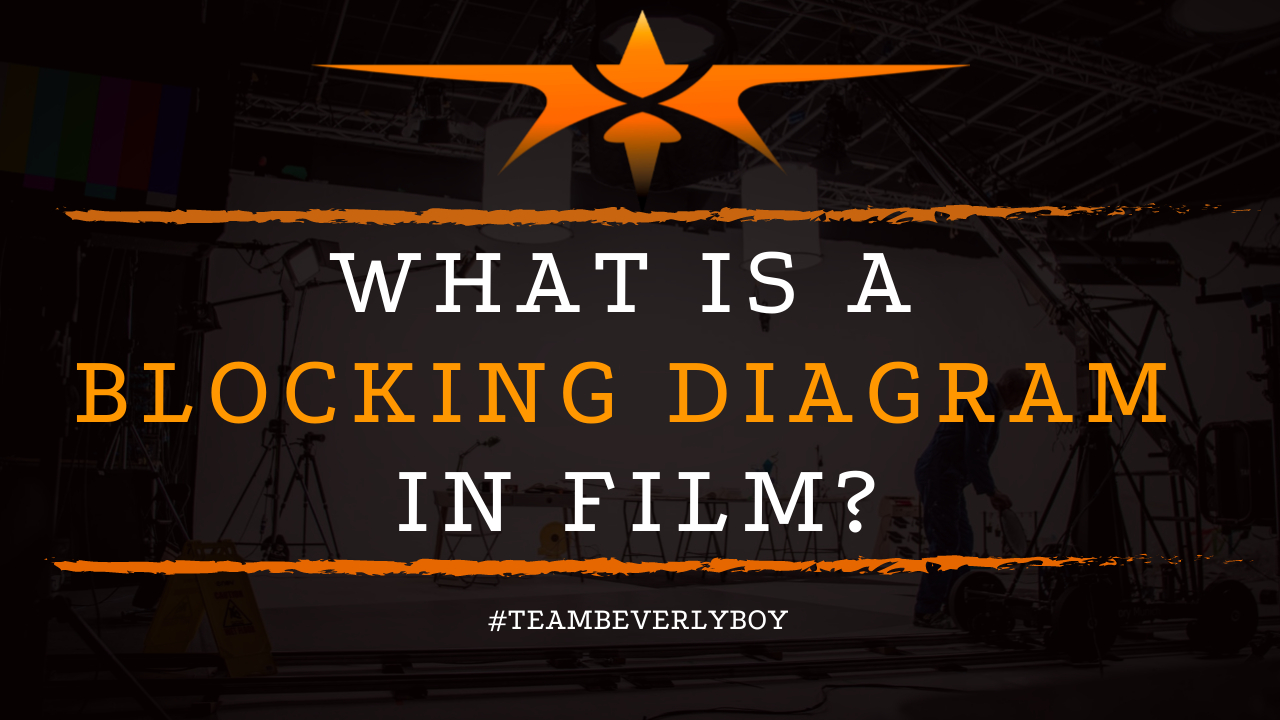
What is a Blocking Diagram in Film?
Whether you’re an experienced Director or an entry-level film school student. Blocking a scene based on a blocking diagram can be challenging and intimidating. Some of the most complex scenes are produced from blocking diagrams that are rendered using professional software. But what is a blocking diagram in film and what does “blocking” mean in the film industry?

What is “Blocking” in Film?
The term “blocking” in film is used to describe the choreography that takes place between the camera and the actors of a scene in order to tell the story. This term is used to describe both camera movements, and actor movements, in relation to one another.
Thus, you might hear a Director say something about “blocking the scene”. Which could mean planning out the character’s movements in relation to camera placement.
Or it could mean that the camera placement and movement is being figured out in relation to the actors and their placement or movements.
Past and Modern
It is believed that the term “blocking” is derived from the early days of theatrical productions. In which theatre directors would create miniature stage models to plan scenes of a play. They would use wooden blocks to represent the individual actors.
So that they could visualize the process as it would play out. Today, “blocking” is the term used to describe movement of the camera in relation to the actor’s movements.
Or to describe working with actors to figure out how their movements and positioning within a scene should play out in front of the camera.
What is a Blocking Diagram in Film?
Sometimes a director will map out the movements or actions of a character in a scene before the shoot takes place. Or, it’s possible the director will map the movement of the cameras within the scene ahead of time. This is called a blocking diagram.
The blocking diagram in film represents the position of the camera, and the actors, in the scene. To the naked eye, or someone that’s not familiar with a blocking diagram. It might look like a series of stick figures, and scribbles.
But to a Director and to the camera crew? The blocking diagram delivers a lot of important details about the character and camera movements taking part in a scene.
Why is Blocking Important?
Blocking can be used to tell the story of a film visually. The way that actors are staged and the subtle use of the camera to capture different elements of the story can help the audience to see what’s happening between the lines.
Through blocking, the audience can grow fonder of a character, learning fine details about how the character feels, what a character’s relationship is to another character, or what kind of internal struggles a character is coping with.
Blocking is also important as it helps to define how the Director of Photography and the rest of the crew will work to light each scene. Once preparations have been made as to how each character will move, where the cameras will be in the process, and how the cameras will move.
Steps can be taken to account for shadows that might occur as a result of blocking or to otherwise ensure proper lighting, particularly if a camera will be tracking or in the event that a dolly in should require additional compensation.
How is a Blocking Diagram in Film Created?

Sophisticated software can be used to produce a blocking diagram. But some of the most intricate and complex blocking diagrams in films past are the result of hand draw blocking diagrams.
The blocking diagram can be created in either format. As long as it includes the most important elements of the diagram.
Shot Design
Essentially, a blocking diagram can be a relatively simple, hand drawn diagram. That shows the placement of key characters in the scene, the movement of those characters, the camera angle or placement, and movement of the camera in relation to the character.
A blocking diagram should provide a bird’s eye view of the scene and what movements are taking place.
Shot designers and various other tools can be used to produce the blocking diagram. Many even offer sophisticated integrations with your shot list and other elements of your script.
But, if you’re low-budget or no-budget, a hand drawn blocking diagram is 100% free. And has the potential to save you time and money when it comes to production.
Various Formats
Generally, the blocking diagram is going to be two-fold. You’ll have one diagram that shows the characters and their movements in relation to camera placement. Another will show the camera blocking. And include ideal camera positioning and movements on the set.
Blocking diagrams have been created in all different formats over the years. In fact, we’ve seen them drawn on 3×5 index cards. Sketched out on butcher paper that is several feet long. Arranged neatly on graph paper, or printed from a software.
Ultimately, it doesn’t really matter what format your blocking diagram for film is in. As long as you’re taking the time to carefully plan complicated moving shots and the placement of your characters. As well as cameras that are involved in the scene.
In Summary
So, what is a blocking diagram in film? It’s a unique diagram that describes the placement and positioning of actors, cameras and important scene elements. That delivers key details on camera movements or actor movements taking place within the scene.
The blocking diagram helps the cinematographer understand what is expected from their crew. While providing the actor a visual representation of what is expected from them.
While equally shedding light on the ways that movements between characters and cameras on set will take place. It’s an incredibly important document that helps to establish actor and camera placement and movement within the scene.


